Third Saturday Online: Portraits of What I See and Feel about You
Black Refractions | Highlights from The Studio Museum in Harlem features nearly 80 artists from as far back as the 1920s. There are a variety of artistic styles and subjects in the show, including multiple portraits. Portraits have been a popular type of art-making throughout history and in many cultures.
What is a portrait?
A simple definition of a portrait is a painting, photograph, or drawing that represents a person. The importance of portraits, the who (who is painted), and the why (why they are painted), can change depending on time and place.
Although there are numerous important portraits in the Black Refractions exhibition, we will focus on the work of Barkley L. Hendricks and Beauford Delaney. Let’s consider the ways in which both of these artists approached and painted their subjects out of love, and with love, and then use this as inspiration for our own art-making.
For these artists, how they felt about their subjects took on great importance: throughout history, black bodies and faces have not been given due importance and respect in society or in art and art history. To travel to museums and galleries and to be a part of the art world has meant seeing white faces, not the diverse people of the world; these two Black artists did not see people of their own families, communities, and history represented in art. For this reason, Barkley L. Hendricks and Beauford Delaney painted their subjects—people they knew and valued—with deliberateness, to right a wrong.
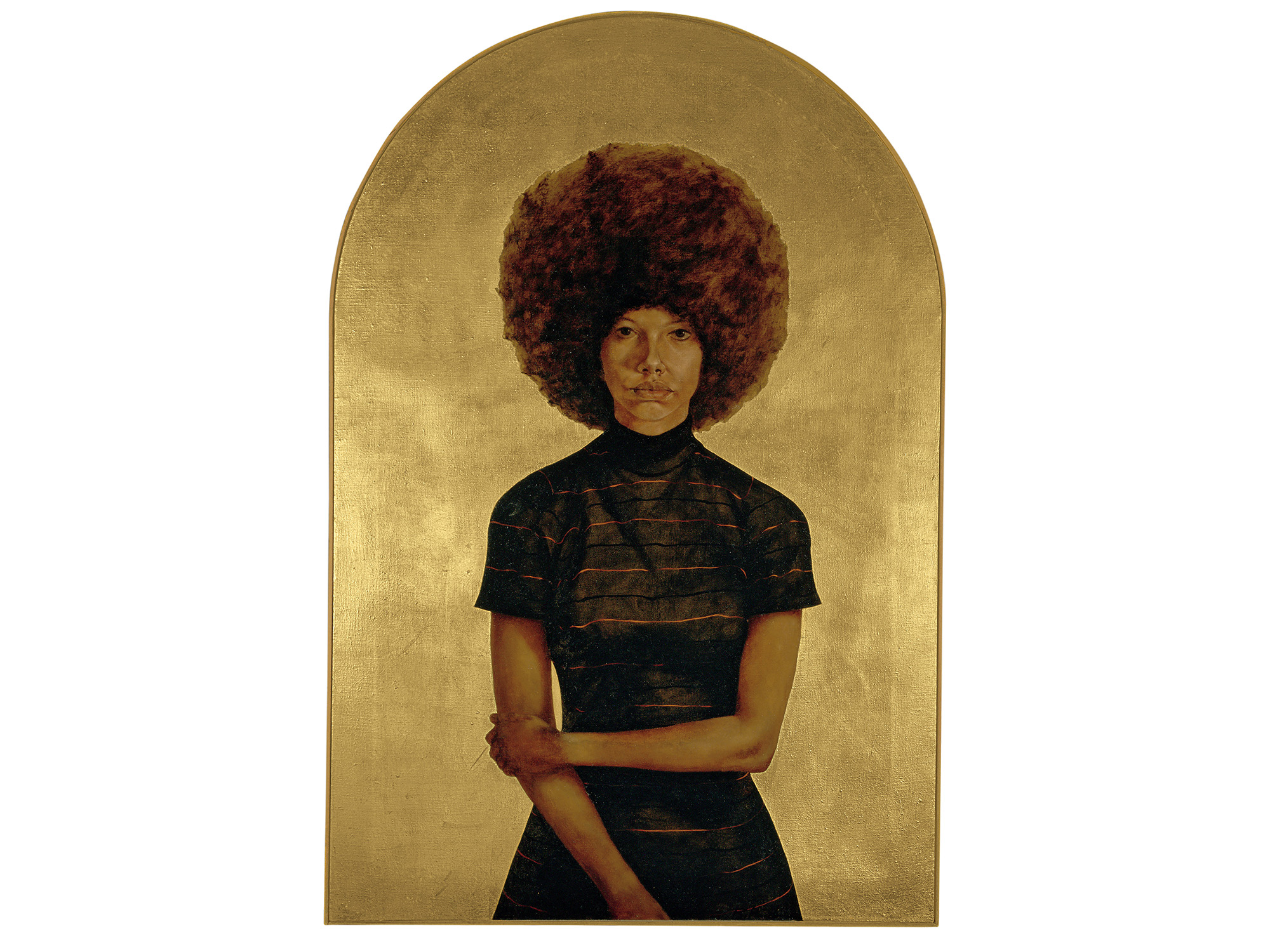
Look at Lawdy Mama by Barkley L. Hendricks. How does Hendricks show us in his painting the importance of this woman? Think about her placement in the painting, the way she strongly faces forward and takes up the center of the space. How do you think he felt about her? What choices does he make with light, texture, and materials to set her apart from the background and draw our eyes to her face and hair? Even the title tells us how he feels: “Lawdy” is a variation of the word “Lordy,” a way to express extreme feeling and surprise.
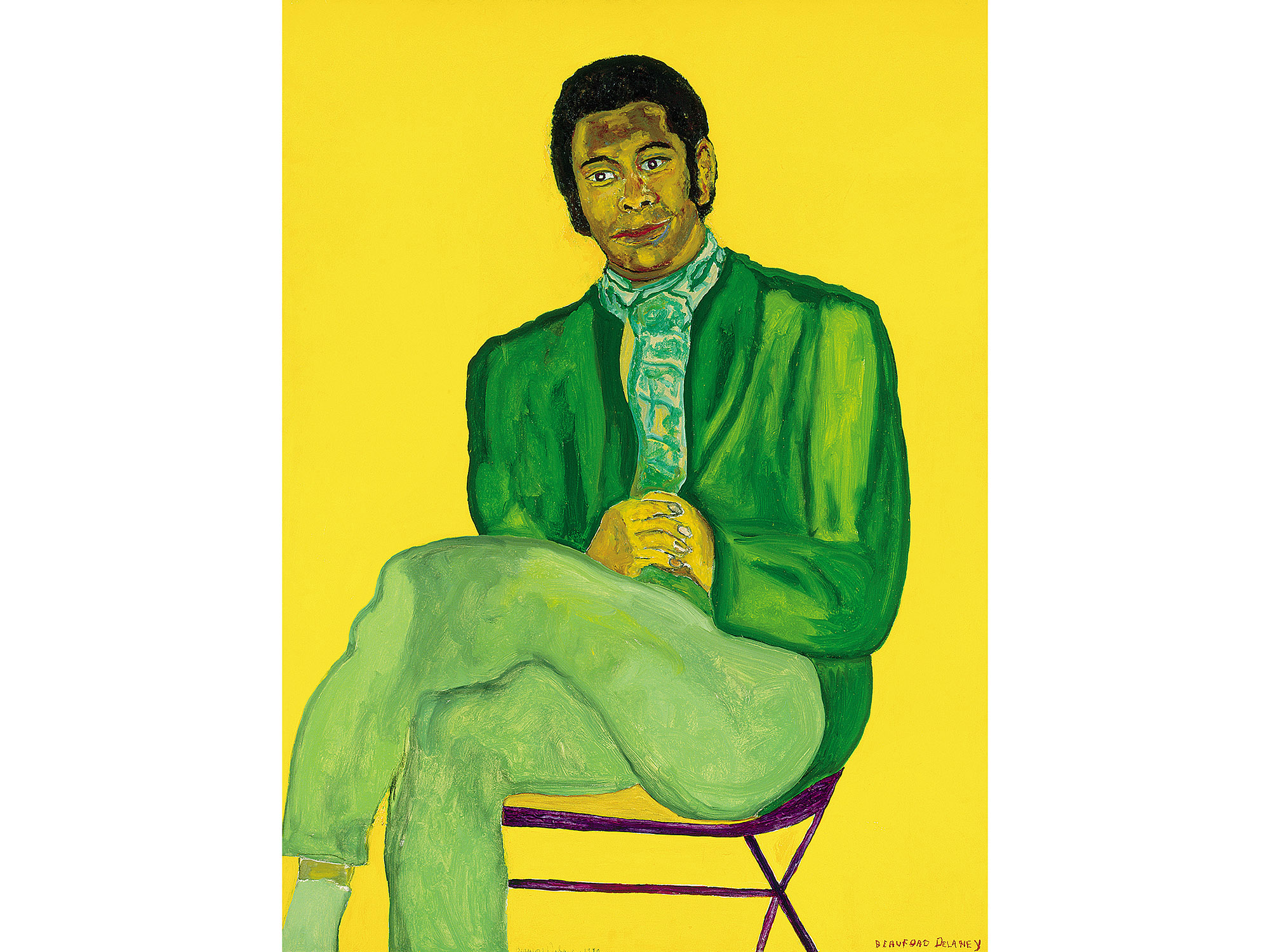
Beauford Delaney was known for his use of bright, bold colors that surrounded his subjects. In Portrait of a Young Musician, the yellow background surrounds a figure that looks out at us. Writer James Baldwin said of his painter friend, "Perhaps I should not say, flatly, what I believe—that he is a great painter—among the very greatest; but I do know that great art can only be created out of love, and that no greater lover has ever held a brush." How do you think Delaney’s passion for painting and love for his portrait subjects show in this artwork? Think about the color choices, the composition (where things are placed in the frame), and even the brushstrokes.
Make a Portrait
You will need:
- Drawing materials such as pens, pencils, markers, and paper.
- Lined paper for the questionnaire.
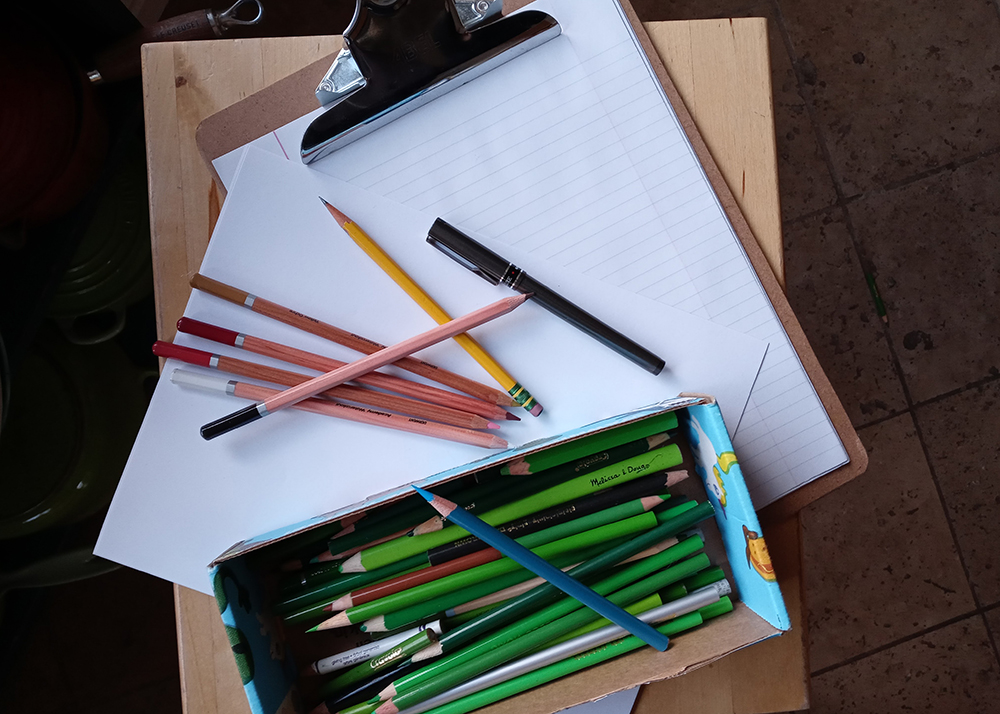
Questionnaire:
Have you ever considered that a conversation and relationships can be an art material? Choose a relationship that you have in your life that is important to you to use as a subject for a portrait. This should be a person that you care about and interact with. Create a series of interview questions for the subject of your portrait. Consider questions that get at what they look like, what is important to them, and what your relationship to them is like. Below are some examples of categories to cover in your questionnaire. Make sure to take notes!
What someone looks like:
- Write down 5 things that you notice about the person.
- Ask them 5 things about their appearance that feel really good to them.
- As you draw your portrait pay extra attention to these things and focus on drawing them as they actually look.
What someone feels like:
- Ask your portrait subject to name some of their favorite activities.
- Ask them to talk about three things that they place a high value on in their life.
- What would they like others to think about them?
What you feel about someone:
- Talk with your subject about what activities the two of you do together that you like best.
- Talk about how it feels when you are together with them.
- What do you like and admire about them or what have they taught you?
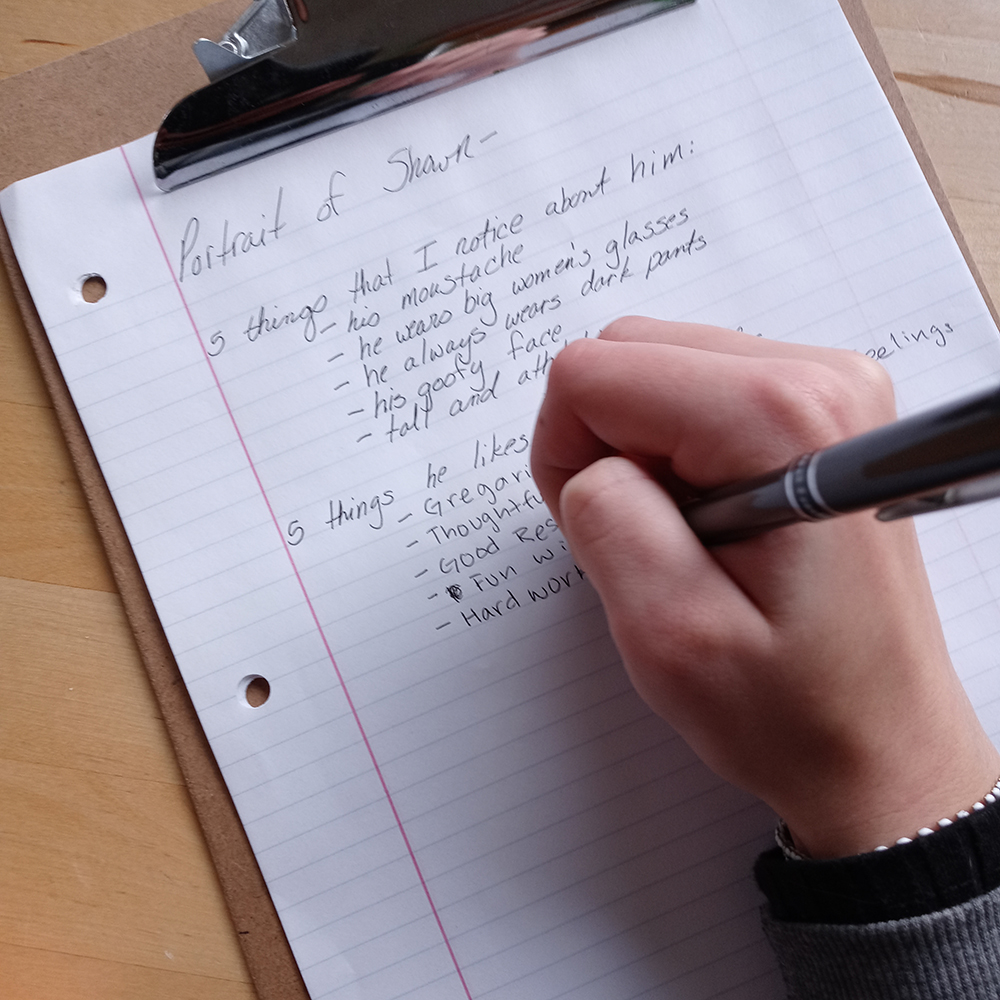
Get Drawing!
Use your conversation and your notes to shape your portrait. As you draw the person, either as they sit in front of you or by using a photograph of them, think about all that you have talked about. Decide what ideas you can include from your conversation in your artwork, either by paying more attention to how you draw certain parts and where you place things, or even by adding pictures and words to the space around them to tell a fuller story.
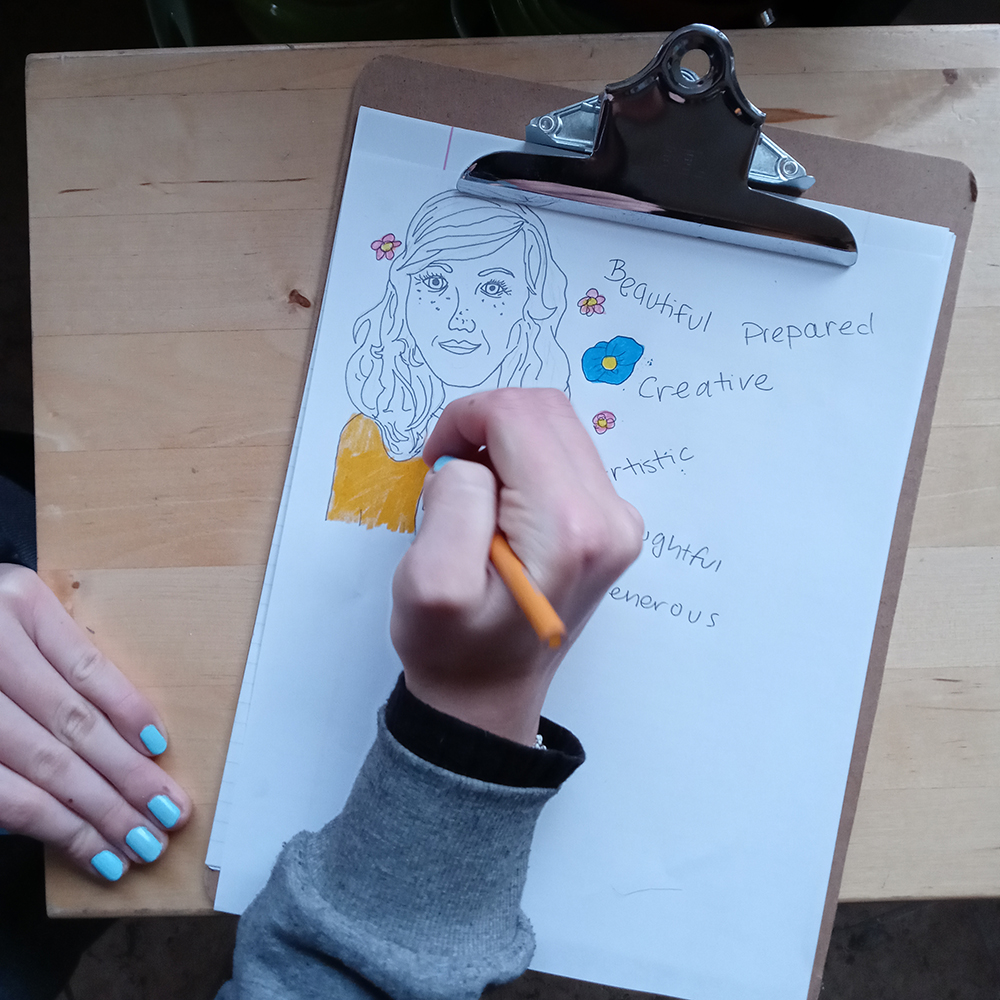
Thank you to Framework Arts for creating this curriculum.
Framework Arts is a project-based, curriculum-building organization that engages youth, educators, and the public throughout the Salt Lake community in creating and representing personal narratives. More information can be found at frameworkarts.org
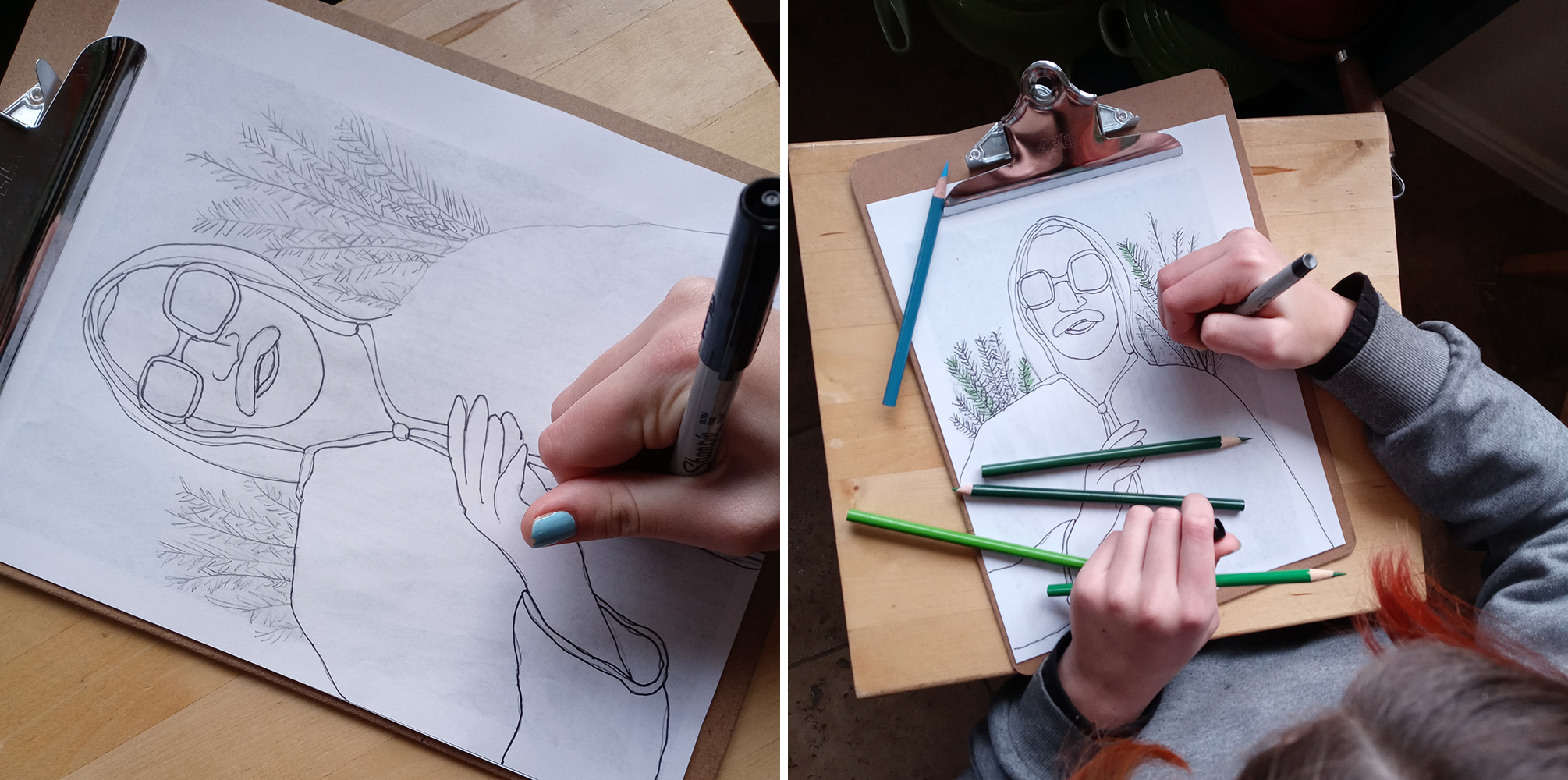
Samples created by Beatrice Teigen
This exhibition is organized by the American Federation of Arts and The Studio Museum in Harlem. Major support for Black Refractions: Highlights from The Studio Museum in Harlem provided by Art Bridges. Sponsorship for the national tour provided in part by PURE. Support for the accompanying publication provided by Furthermore: a program of the J.M. Kaplan Fund.
The exhibition is curated by Connie H. Choi, associate curator, permanent collection at The Studio Museum in Harlem. It was organized for Salt Lake City by Whitney Tassie, senior curator and curator of modern and contemporary art at UMFA.
The UMFA exhibition is presented in partnership with the University of Utah Black Cultural Center and made possible by:
Curatorial Sponsor | Willard L. Eccles Family Foundation
Installation Sponsors | Tim & Stephanie Harpst
University of Utah College of Mines and Earth Sciences
Programming Sponsors | University of Utah J. Willard Marriott Library and Honors College
